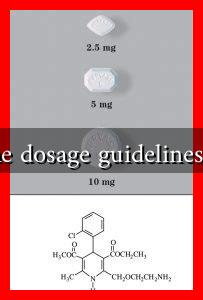-
Table of Contents
Amlodipine Dosage Guidelines for Adults
Amlodipine is a widely prescribed medication belonging to the class of calcium channel blockers. It is primarily used to treat hypertension (high blood pressure) and angina (chest pain). Understanding the appropriate dosage guidelines for adults is crucial for maximizing the drug’s efficacy while minimizing potential side effects. This article delves into the recommended dosages, factors influencing dosage, and important considerations for patients and healthcare providers.
Understanding Amlodipine
Amlodipine works by relaxing the blood vessels, allowing blood to flow more easily, which helps lower blood pressure and reduce the workload on the heart. It is often prescribed as part of a comprehensive treatment plan that may include lifestyle changes and other medications.
Recommended Dosage Guidelines
The dosage of amlodipine can vary based on individual patient needs, but general guidelines are as follows:
- Initial Dose: The typical starting dose for adults is 5 mg once daily.
- Maintenance Dose: Depending on the patient’s response, the dose may be increased to a maximum of 10 mg once daily.
- Special Populations: For elderly patients or those with hepatic impairment, a lower starting dose of 2.5 mg may be considered.
It is essential for patients to follow their healthcare provider’s instructions regarding dosage adjustments. Regular monitoring of blood pressure is recommended to ensure the medication is effective.
Factors Influencing Dosage
Several factors can influence the appropriate dosage of amlodipine for an individual:
- Age: Older adults may metabolize medications differently, necessitating lower doses.
- Weight: Body weight can affect drug distribution and metabolism.
- Kidney and Liver Function: Impaired function in these organs can lead to increased drug levels in the body, requiring dosage adjustments.
- Other Medications: Drug interactions can alter the effectiveness of amlodipine or increase the risk of side effects.
Potential Side Effects
While amlodipine is generally well-tolerated, some patients may experience side effects. Common side effects include:
- Swelling of the ankles or feet (peripheral edema)
- Flushing
- Dizziness or lightheadedness
- Fatigue
In rare cases, more severe side effects may occur, such as rapid heartbeat or severe allergic reactions. Patients should be advised to seek medical attention if they experience any concerning symptoms.
Case Studies and Statistics
Research has shown that amlodipine is effective in managing hypertension. A study published in the Journal of Hypertension found that patients taking amlodipine experienced a significant reduction in systolic and diastolic blood pressure compared to those on placebo. Furthermore, a meta-analysis indicated that amlodipine is associated with a lower risk of cardiovascular events compared to other antihypertensive agents.
Conclusion
In summary, amlodipine is a vital medication for managing hypertension and angina in adults. The recommended starting dose is typically 5 mg once daily, with the potential for adjustment based on individual patient factors. It is crucial for patients to work closely with their healthcare providers to determine the most effective dosage while monitoring for side effects. By adhering to these guidelines, patients can achieve better health outcomes and improve their quality of life.
For more information on amlodipine and its usage, consult resources such as the Drugs.com website or speak with a healthcare professional.

